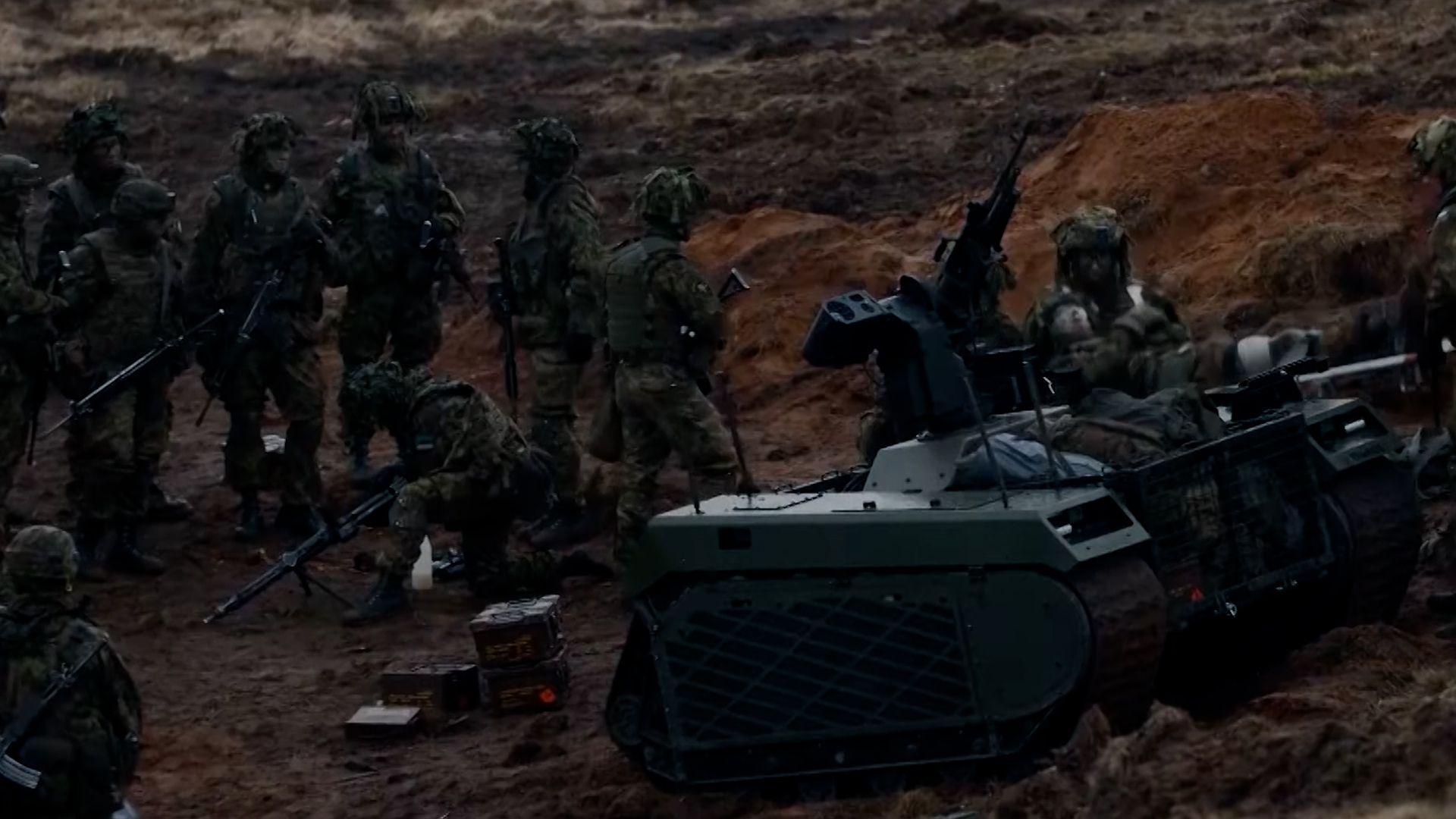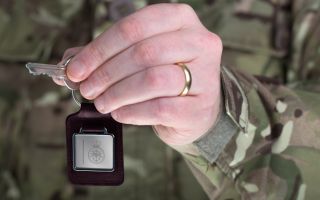The age of autonomous combat robots arrives with THeMIS uncrewed ground vehicle
For frontline troops, UGVs – or uncrewed ground vehicles – are the future and have become commonplace on the battlefield.
One has already been utilised by Ukraine and is being put to work by Kyiv's military – namely THeMIS, one of the most advanced UGVs out there.
Developed in Estonia, 15 THeMIS have already seen action in Ukraine, transporting ammunition and supplies and evacuating injured soldiers.
Raul Rikk, Capability Development Director, Milrem Robotics, said the vehicle was like a "wingman for a soldier".
"This vehicle was developed to support the dismounted troops," he said.
He explained a machine gun can be placed on top of the vehicle, or it can be used to carry radio equipment, sensors or anti-tank systems.
"You can also transport the wounded persons, you can use the vehicle for logistics, mines clearance, whatever is there," he added.

THeMIS is short for Tracked Hybrid Modular Infantry system.
It weighs just over 1,600 kilos and is powered by a hybrid diesel-electric engine.
It has a top speed of 12mph and, when fully fuelled, can operate in the field for up to 15 hours and carry a payload of 1,200 kilos – about the weight of a Ford Fiesta.
It can also be operated remotely by a human, Mr Rikk explained, but it does have autonomous functions.
"You can give it the point where it should go – it goes there," he explained.
"You can say to the vehicle, go home now. It goes back to home, the same route that it came there."
Additionally, THeMIS can be controlled remotely from a mile away, but that range can be vastly increased to hundreds, even thousands of miles using airborne relays and satellite systems like Starlink.
And in Ukraine, operators are using tech that allows them to control multiple robots and drones at the same time.
Henrik Kotkas, Chief Product Officer, Milrem Robotics, explained that is through the "introduction of autonomy".
"Obviously the rules are you can't shoot autonomously, but you can do other stuff, which is collect information, you can observe, you can listen, you can take ammunition and you can bring something back," he said.
"So merging the world between a person and a system and an autonomous function allows us to look at the future battlefield from a point of view of one or two operators controlling, I wouldn't say a swarm, but a group of UGVs."
It comes after Ukraine, in December, launched its first entirely robotic assault near Kharkiv.
From the air, dozens of FPV drones attacked a Russian position, while on the ground, UGVs, some filled with explosives, others fitted with machine guns, stormed the trench line.
Ukraine says the attack was a total success.
Only two UGVs were lost, stranded in the boggy terrain, while the Russians suffered scores of casualties.
This robotic revolution is going to completely reshape the modern battlefields, although we're not yet in the realm of robot wars.
Artificial intelligence is allowing these machines to do a lot of the jobs that soldiers would have traditionally done, everything from logistics resupplies through to casualty evacuation.
But the limiting factor really isn't the technology, because that's moving at a hugely rapid pace, it's military doctrine.
How much freedom will militaries give these machines to make decisions on their own?
Mr Rikk said adversaries such as "Russia and China [don't] have these kinds of restrictions".
"If you're on the battlefield and the adversary can actually operate independently without human involvement much rapidly, very, very efficiently, and we have to make the decisions every time when we want to engage something, then I think there is a point to consider," he said.
"Do we really want that?"
Milrim, the firm responsible for manufacturing THeMIS, has doubled in size in just a few years and at their headquarters in Tallinn, they've opened a new factory which can produce 500 THeMIS platforms a year.
As well as providing Kyiv with vehicles, the company also sends engineers to Ukraine to help repair damaged robots and to teach Ukrainian troops how to maintain them.
Henrik Kotkas, Chief Product Officer, Milrem Robotics, said the biggest threat to the system is electronic warfare, but Thermis is holding up "pretty well against that threat".
"For the time being, not a single THeMIS has been taken over, where we've lost a THeMIS is through a direct attack,” he said.
"And you've probably seen that also exhibited from the Russian side as a trophy.
"But not a single THeMIS has been lost because we have lost control [of] it."
THeMIS has been sold to 19 countries, with the latest batch destined for the Middle East.
Former US Army chief General Mark Milley said he believes a third of the US military will be robotic within 15 years.
In Ukraine, that fusion of human and machine is already happening as the pace of technology and innovation accelerates to match the pace of the threat.
The age of the combat robots has arrived.







